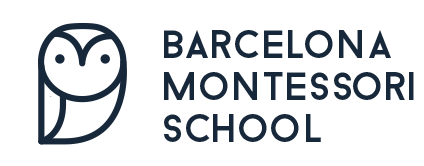A Reflection on 0-3 Montessori Education
by Jenna Mann, BMS 0-3 guide
Maria Montessori and many other developmental psychologists concur that the first six years of a child’s life are the most important in creating the groundwork for who they will become and how they will learn new things in their life. In my experience, the first three years are especially crucial for the child's development. Montessori offers children the highest quality environment for their developmental stage through consistent routines, dedicated observation by trained professionals, an age-appropriate prepared environment, and opportunities for inter-relational skill-building.
In the 0-3 developmental stage, school creates a routine for the child, a vital aspect of physical and emotional development. A solid routine can help the body learn self-regulation, a unique challenge for children ages 0-3 who are highly dependent on others and have little control over their bodily functions. In a Montessori environment, an early entrance to schooling gently and carefully exposes the child to the outside world within the structure of stable sleeping, eating, and focus routines. These early routines can create healthy, lifelong habits.
Throughout each day in an early childhood Montessori environment, we follow the same schedule so that the children know what to expect and develop the confidence to explore new things. An average day in most Montessori schools includes the following: a morning work activity (time to learn how to use the Montessori materials), circle time, outdoor play with a morning snack, lunch, nap for 2 hours, snack, and more outdoor play. The routine creates order for the child, contrasting their inner sense of chaos.
The adults in the Montessori environment are keen observers of the child’s interests and personality development, an expression of respect for the child. If I acutely watch a child, I can understand how to support and encourage the specific child to learn and grow. For example, through keen observation, I may notice when the child is more tired and irritable and choose to lower my expectations of the child at that moment. Giving small children this type of attention can make them feel special, increase their confidence, and create a positive association with the school environment. Observation also allows the guide to nurture the child´s innate tendency to explore and learn new things.
Although your child may have lots of wonderful and didactic toys at home, at-school trained professionals can help the children to develop more specific interests. By offering different types of materials in the Montessori environment, a child can explore natural attractions to certain materials. In Montessori, we create quiet, peaceful environments so that the children can focus on what they are doing. William James, the “American father of psychology,” equated attention with intellect. While it is often difficult for small children to focus for a long time on one thing, Montessori schools help children develop this skill at a very young age.
Montessori schools have mixed-age classrooms because it is easier for a child to learn how to use something from someone closer in age to them. Maria Montessori used the term “the absorbent mind” to refer to the state of a child´s mind at this age. Children ages 0-6 learn by soaking up everything in their environments. Language is a great example. Children do not need lessons to learn languages within these first years of life; they simply absorb the information from their environment. The absorbent mind responds better to the modelling of older children to learn things. For example, a very young child will learn how to move their hands to peel a clementine by watching a child some months older than them. The movements of this older child will be easier to imitate than those of an adult whose are bigger and makes much faster movements.
Even though children ages 0-3 cannot use language for direct interaction, they can engage in parallel play. Parallel play refers to independent, side-by-side play with minimal interaction between the children. Despite the little interaction, they are still aware and observant of their surroundings. This situation develops group and community-building skills in the child. Similarly, there is often only one of each material in the classroom, requiring the children to wait until their peer completes their work. Children can learn both patience and their true interests through the experience of waiting patiently for material.
Sending your child to school before they are three can have very positive effects, including the education of skills for success throughout their life. Early childhood experiences leave an imprint on all of us. We may not remember our first years of life but they fundamentally shaped who we are nevertheless. The Montessori methodology was created for very young children with this in mind. Our goal is to support and encourage the healthy development of children into adults who will cultivate a better world for everyone.
– Jenna Mann, BMS 0-3 guide trained at the International Montessori Institute. To learn more about her, read her Instagram spotlight here.



